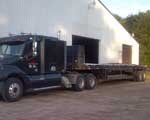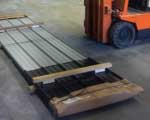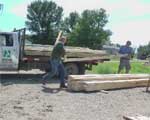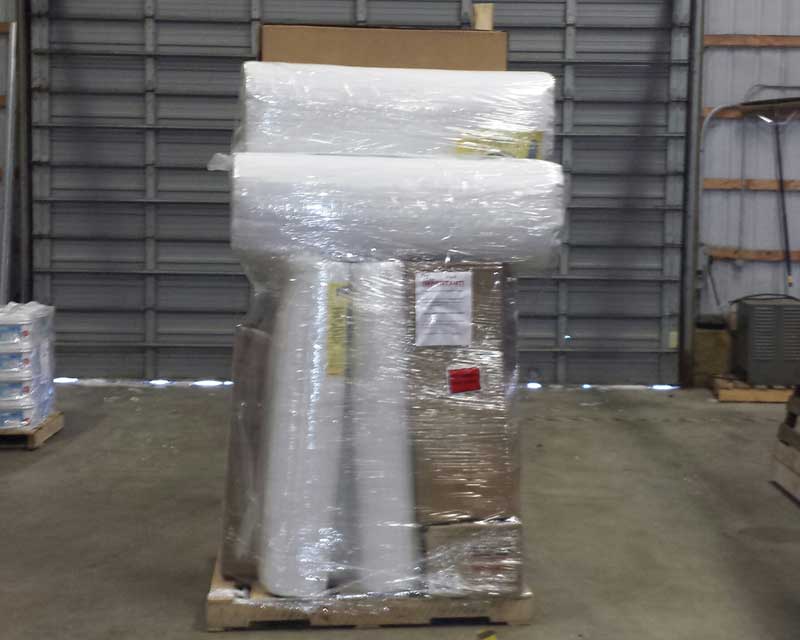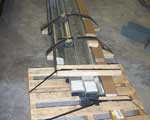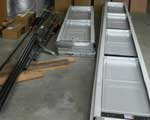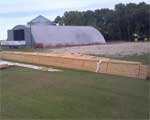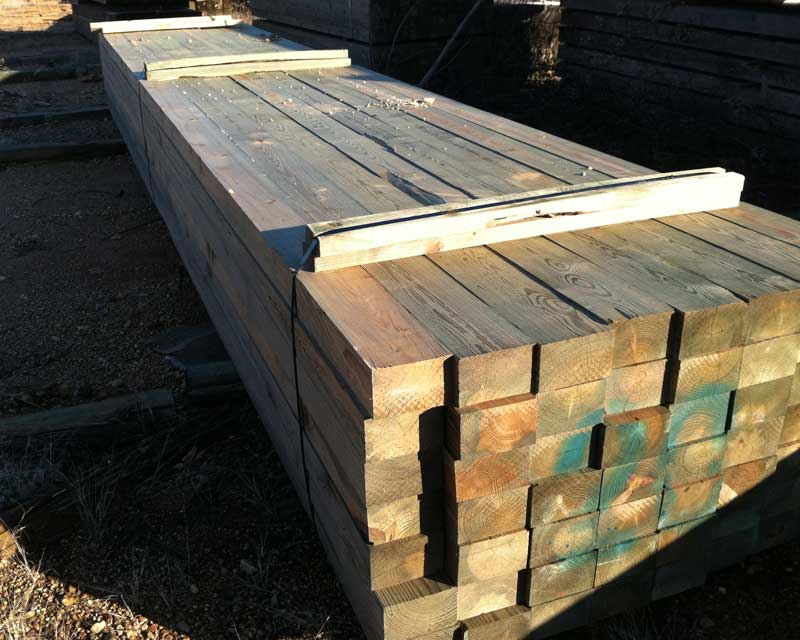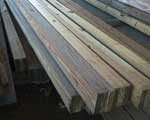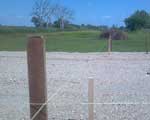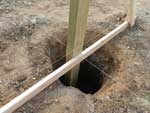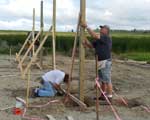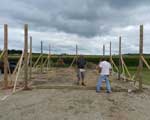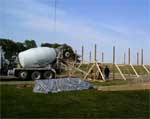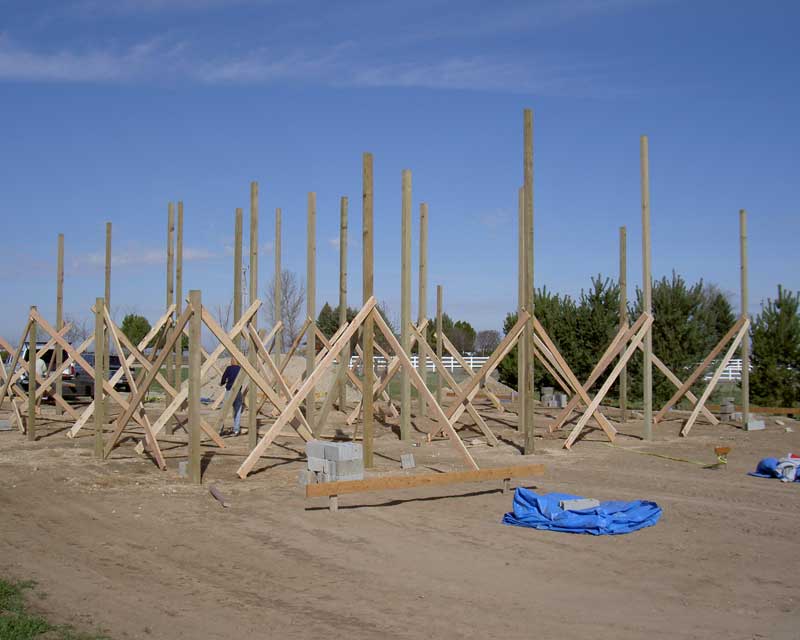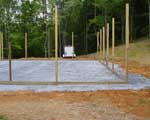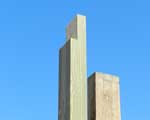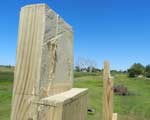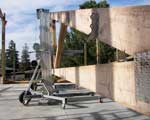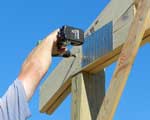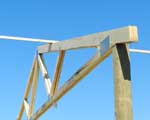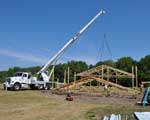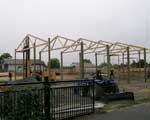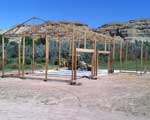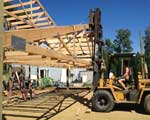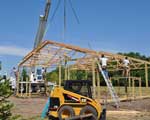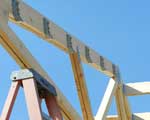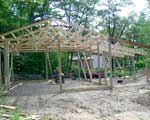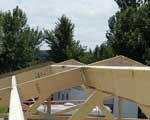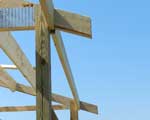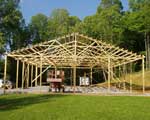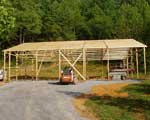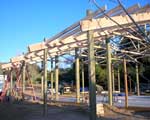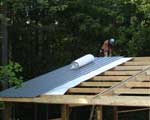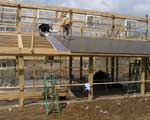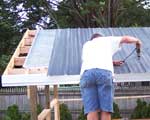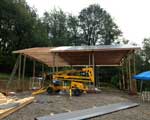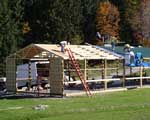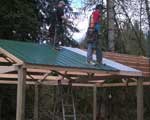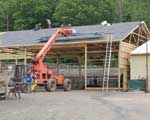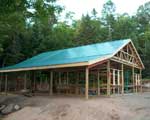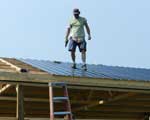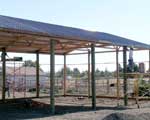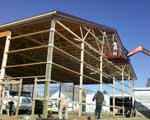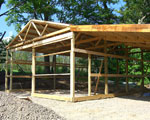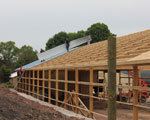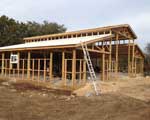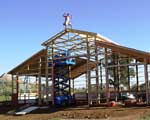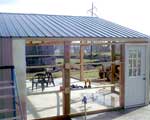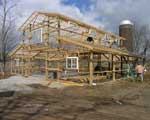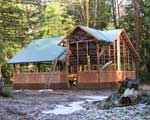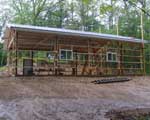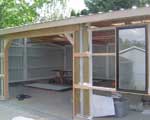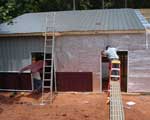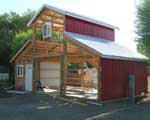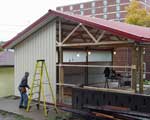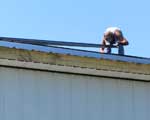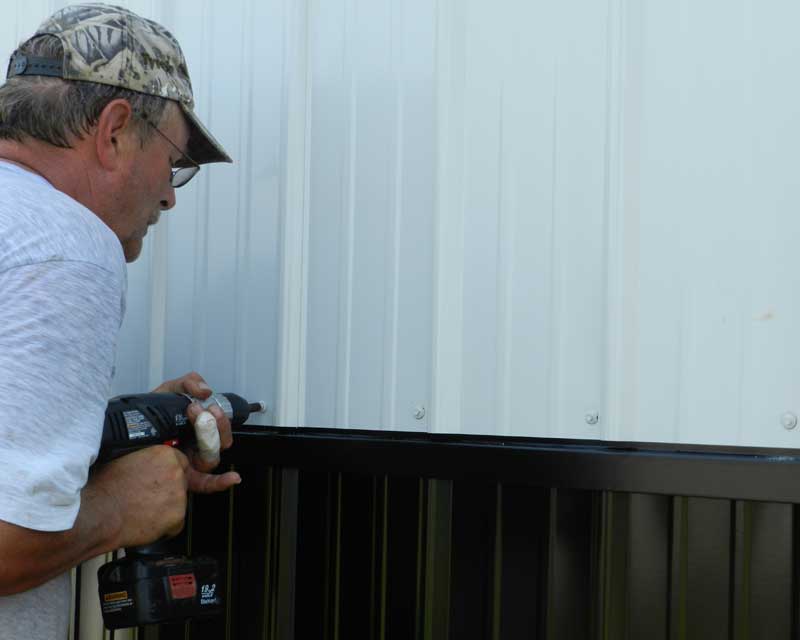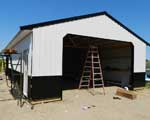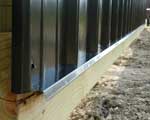Building a pole barn or shed doesn’t require a high degree of building knowledge. A large majority of our clients are do-it-yourselfers with no construction experience who still complete great-looking projects. Hansen Buildings provides detailed plans to make building a pole barn easy—our comprehensive construction manuals put you well on your way to making your very own pole building. We look forward to helping you create your building your own way.
To find a large variety of completed building photos please visit – Pole Barn Exterior Photos
How to Build a Pole Barn
Here are the best ways to build a pole barn: Either follow the step-by-step instructions we send right to your door, or seek help from a professional contractor in your area. If you decide to put the building together yourself, take a look at these pole barn construction tips.
Pole Barn Material Deliveries
Receiving and taking stock of your materials are the first steps in pole barn construction. It is critical that all materials are accounted for and in good condition before you start your project. Hansen Buildings has a 48-hour inventory policy: Notify us of any damaged or missing materials within this time frame so we can immediately work to correct the problem. The number of deliveries for a pole barn kit varies widely by building option and added features. We recommend you don’t start construction until all materials have been delivered in the right condition to avoid unexpected delays or expenses. Should you have any delivery questions, you can email us at materials@hansenpolebuildings.com.
Setting Poles
One of the most important steps to building a pole barn is setting the poles at the proper depth and square. First, set an accurate string line to mark your hole locations. After augering holes to the depth shown in your plans, place a temporary board perpendicular to the column to suspend the pole off the bottom of the hole, allowing concrete to surround the post underneath the column and around the pole. Solid columns are rarely straight, so we recommend placing the post with any crown or bow toward the inside of the building so columns can be pulled vertical when trusses are set. After bracing each column, confirming dimensions, and making sure the building is square, you can pour your concrete footing and backfill the soil to grade.
Setting Trusses
The next step in your pole barn construction project is notching your poles for the trusses. One of the most common mistakes builders make is notching poles at an incorrect height. It is always best to consult your provided plans to determine the proper notch locations for your building. (This step does not apply to buildings that use a design with truss carriers.) The photos below show a variety of methods for raising trusses. Once the trusses are fastened to columns, you can begin bracing them and framing the roof.
Roof Framing
Check your plans for purlin spacing and size—this can vary between different portions of a roof system. It is best to install joist hangers and do all measuring while trusses are on the ground. The most common mistake made during roof framing is starting purlin installation from the peak down. Start at the eave and work your way toward the peak to ensure that you have proper purlin spacing—the ridge purlin can be no closer than 5 inches to the peak. Depending on your available equipment, you may want to build a bay on the ground and then lift the entire bay with trusses and purlins installed at once. This greatly reduces the chance of any pole barn construction accidents and speeds up installation.
Reflective Roof Insulation
Reflective roof or wall insulation is optional in every Hansen Building kit, but it’s highly recommended to eliminate condensation on your building’s steel interior. To install reflective roof insulation, install at the eave girt and run it up to the ridge purlin while overlapping the next run with the 2″ adhesive strip provided with the insulation. It should be installed below the steel roofing and not in any overhang areas.
Roof Steel
To install your roof steel cleanly, pre-drill your screw holes for a better end result. Any metal shavings should be removed before installation. Make sure you start with the steel installed with the underlap going in the direction you are installing—doing this incorrectly will require you to take off the panels and start over. Make sure all screws are screwed in straight and far enough for the washer to seal but not to overtighten and dimple the metal.
Wall Framing
Pole barn wall framing can vary by the span or design. On a standard Hansen Building design, wall girts are installed with the 1.5″ face facing the building exterior like bookshelves. Smaller post spans or alternate designs allow for the girts to be nailed flat to the exterior of the posts as well. We commonly use bookshelf girts to increase strength in the wood by turning it to use its stronger axis. Installed in this fashion, the girts are cut to lengths between the poles with blocking going up vertically to nail the girts to.
Building a pole barn varies greatly from one region to another. If you’re interested in a specific, preferred design, let our building designers know so we can accommodate your request and give you our recommendations.
Wall Steel and Trims
Trims and wall steel are installed next. Make sure you are using the proper screws to install trims—they are a different design than roof and wall steel screws. Do not assume you know where the trim goes. Take a look at your provided materials to see where each trim profile should be installed—failure to do so can result in being short or using trims in an incorrect location. We fully trim our buildings with base, j channel, rake and corners, fascia, z trim, and trims around any openings. There will be no exposed, untreated wood in your Hansen Building kit.
Build a Pole Barn Through Hansen Pole Buildings
If you’re ready to dive headfirst into your next pole barn building project, refer to these pole barn construction tips or the Pole Barn Guru blog. You can always call one of our building experts to get the scoop on everything you need to know before building a sturdy, safe, and attractive pole barn.
